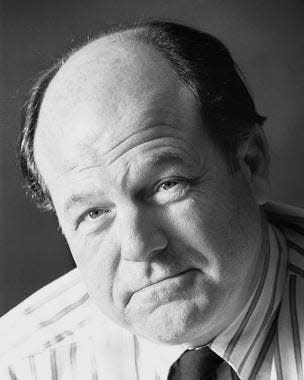As It Were: 'Swedish Nightingale' sent Columbus on path of regional arts center
- Oops!Something went wrong.Please try again later.
It is sometimes easy to presume that the Buckskin men and women who settled the Ohio Country in the wake of the American Revolution were a crude and unkempt lot.
This bold and adventurous group pushed back the line of the moving frontier and made the new land their own. Although uncultured, these people were unrelenting in their efforts and successful in their endeavors.

Like many generalizations, there is some truth here, but most of this image is some distance from the truth.
Many of these people were literate and brought their culture as well as their belongings with them. Pledged to the principles of free expression and education in the Northwest Ordinance, the new residents of Ohio wished to create models of moral citizenship based on the beliefs they brought with them.
They also did not mind pursuing a little pleasure.
Frontier Franklinton had been settled at the forks of the Scioto and Olentangy rivers in 1797. The new capital city of Columbus was created in 1812. Early amusements included bear baiting, ax throwing and a considerable amount of gratuitous imbibing.
But after 10 years of forest removal and town building, some citizens of Columbus felt the need to uplift the culture of the capital city.
In 1821, an early history notes that “an association of vocalists calling itself the Handel Society seems to have been the first musical organization in Columbus. We read of its participation in the celebration of Independence Day in 1821 and 1822, on which occasions we are told, it acquitted itself with ‘a superior degree of elegance.’”
This may have been the first classical music performance in Columbus, but it would not be the last.
Over the next several decades traveling “artistes” competed for the public’s attention with itinerant circuses, carnivals and balloon ascensions.
As It Were:With 'Blue Laws,' Labor Day's seasonal turn came to Columbus quietly in 1922
But the cultural event that drew the most attention in the mid-19th century was the brief visit and performance of Jenny Lind.
Born in Sweden in 1820, Johanna Maria “Jenny” Lind, was first noticed by professional musicians at the age of 8 as having an extraordinarily pure soprano singing voice.
Enrolled in the Royal Dramatic Training Academy of the Royal Dramatic Theatre in Sweden, Lind soon was launched into a singing career that brought her acclaim across most of the major capitals of Western Europe. She became particularly close friends with people as diverse as author Hans Christian Andersen and composer Felix Mendelssohn.
After a triumphant tour of Great Britain in 1849 with each of her performances witnessed by Queen Victoria, Lind concluded her operatic career and launched into offering public performances hoping to finally make her fortune. To make her way successfully, Lind, who was called the “Swedish Nightingale,” would need the help of a master promoter.
Enter Phineas Taylor Barnum.
P. T. Barnum had made his fortune by promoting the widest variety of entertainment attractions, from trained elephants to Tom Thumb, the very short but successful celebrity. In 1849, Barnum offered to produce an American tour for Jenny Lind. Seeking to make some money for charitable purposes, Lind agreed to participate in a 150-city tour at $1,000 to her per place. Her American tour earned her $350,000 (about $13.5 million today) for the benefit of charities of her choosing.
The tour was extremely successful. Tiring of Barnum’s promotional antics, Lind parted amicably from the partnership and negotiated appearances on her own. One of those appearances was Nov. 4, 1851, in Columbus. An early history described the event.
“The place chosen for the concert was the Odeon Hall. The tickets were limited in number, so that each purchaser might be assured of a seat, and were sold for $4, $3 and $2 according to location. The sale was made by an authorized agent. Before noon on Nov. 3 all the places were taken.
“The program had several participants. Lind sang her famous ‘Bird Song’ in the first half of the program with several other well-known songs. In the second half of the program, Lind sang a well-known song called ‘Auld Robin Gray’ followed by some other songs and concluded her program with ‘Norwegian Echo Song.’”
The Ohio State Journal reported on the reaction to her performance.
“We are sure we speak the general view of those who had the pleasure of hearing her (Lind) when we say she fully equaled the expectations of her audience. It was the most brilliant, best dressed (he dress of the audience was, of course, a matter of the first importance) and best-looking house we have ever seen in Columbus. … We are informed that about 1,000 persons, a large number of whom were females, occupied the streets and sidewalks in the vicinity of the hall.”
Columbus was beginning to emerge as a regional arts center, and it remains one to this day.
Lind returned to Europe and continued to perform until her death in 1887.
Local historian and author Ed Lentz writes the As It Were column for ThisWeek Community News and The Columbus Dispatch.
This article originally appeared on ThisWeek: 'Swedish Nightingale' sent Columbus on path of regional arts center
